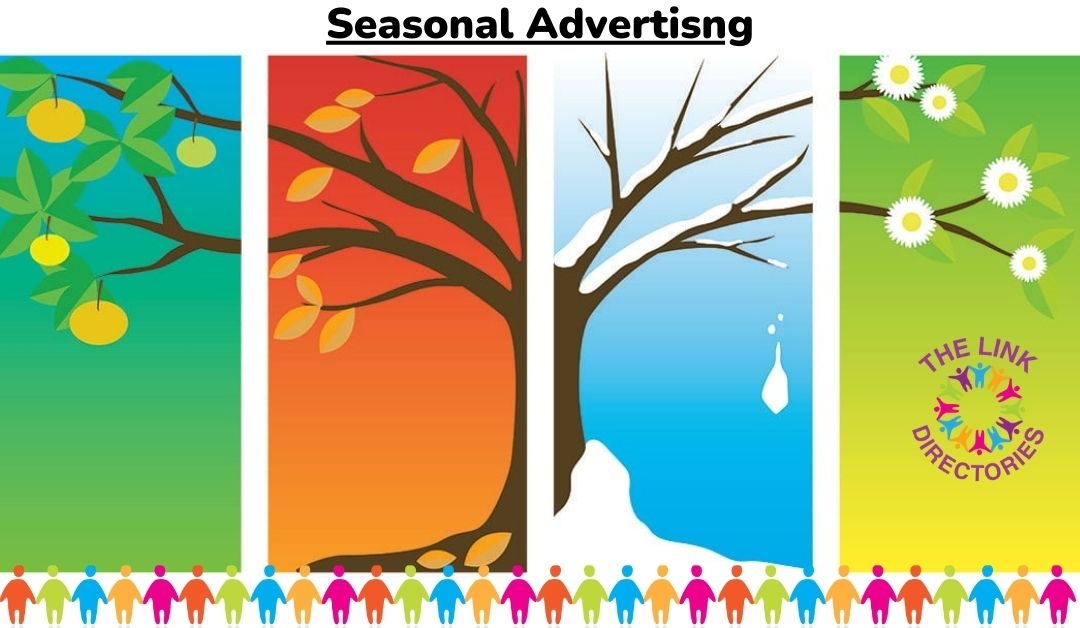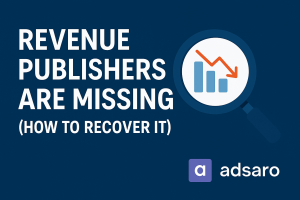As a publisher, you know that digital advertising is at the heart of your revenue model. But how can you ensure that you’re making the most out of every season and holiday? The key lies in seasonal advertising strategies—a powerful approach to aligning your content and ad inventory with the natural ebb and flow of consumer behavior throughout the year.
From the retail frenzy of Black Friday to heartwarming holiday ads, seasonal campaigns offer a chance to capitalize on increased demand and engagement. By adapting ad strategies to different times of the year, you can unlock new revenue streams and build stronger advertiser partnerships. In this post, we’ll explore how to create an advertising calendar, develop content that aligns with seasonal intent, and optimize ad formats to capture growth opportunities. Let’s dive into the best strategies for maximizing revenue year-round.
What is Seasonal Advertising?
Seasonal advertising strategies refers to the strategic placement of advertisements that are timed to align with specific times of the year, holidays, or events that have a predictable impact on consumer behavior. This advertising strategy takes advantage of the cyclical nature of seasonal events to deliver more relevant and timely ads to users, thereby boosting engagement and increasing ad revenue for publishers.
Each season comes with its own set of trends, cultural events, and shopping behaviors. For example, during the winter holidays, consumers are more likely to engage with ads related to gifts, travel, or home decorations. Similarly, summer might bring increased interest in outdoor activities, vacation rentals, and leisure products. Seasonal advertising helps ensure that your content and ads are aligned with these changing interests, making your campaigns more effective and valuable for both advertisers and your audience.
1. Why Seasonal Advertising Matters ?
Seasonal advertising adjusts strategies based on specific times of the year, holidays, and events that influence consumer behavior. These trends affect what products or services consumers are interested in and when they’re most likely to buy. By aligning ads with these seasonal shifts, publishers can deliver more relevant ads, boosting engagement and increasing revenue.
Each season brings unique consumer behaviors. For example, winter holidays drive interest in gifts, travel, and home decor, with brands like Amazon or Wayfair leading the way in these categories. Summer sees a focus on outdoor activities and vacation rentals, with companies like Airbnb and REI capturing attention. Recognizing these patterns helps publishers attract advertisers during high-traffic periods like back-to-school or the holidays. This strategy ensures better ROI for advertisers and increases revenue for publishers by aligning content with seasonal trends.
For publishers, seasonal advertising is essential because:
- Traffic Spikes: Many publishers see significant traffic spikes around certain events, holidays, or seasons. For example, during the holiday season, traffic on e-commerce or lifestyle websites tends to soar. Publishers who align their ad strategies with these peaks can attract higher-paying advertisers who want to reach this traffic.
- Increased Advertiser Demand: Advertisers tend to spend more during high-traffic periods like Black Friday, Christmas, or back-to-school. Publishers who align their content and ad inventory with these seasons can tap into more lucrative deals, increasing ad revenue.
- Higher Engagement: Seasonal ads are more relevant to users during certain times of the year. Relevancy increases user engagement, which in turn improves metrics like click-through rates (CTR) and conversions. The more engagement you have, the more attractive your ad space becomes to advertisers.
In short, seasonal advertising strategies help publishers align with seasonal trends. They capitalize on advertiser budgets and create a more engaging experience for users. This drives both revenue and user retention.
2. Building an Effective Advertising Calendar
An advertising calendar is a crucial tool for publishers to map out the year and plan for major events and holidays that could impact both content and advertising strategies.
By organizing content around specific seasons or holidays, publishers can better serve both their audience and advertisers. Here’s why a well-planned advertising calendar is so important:
- Aligning Content with Traffic Peaks: Major events such as New Year’s, Valentine’s Day, or Black Friday create seasonal spikes in traffic for specific topics (e.g., gift guides, holiday shopping). By preparing content around these events, you ensure that your ads are placed in front of the right audience at the right time.
- Advanced Planning for Advertiser Needs: Many advertisers plan their seasonal campaigns months in advance. By having an advertising calendar, publishers can plan out available inventory, make deals early, and avoid last-minute rushes when demand is high.
- Maintaining Year-Round Relevance: An advertising calendar helps ensure that your site isn’t just relying on one or two busy months for income. By planning campaigns for different seasons, you can ensure steady revenue flow throughout the year.
By following an advertising calendar, publishers can prepare in advance and strategically place ads based on high-traffic periods, increasing revenue opportunities and improving ad targeting.
3. Aligning Content with Seasonal Intent
Content is king when it comes to seasonal advertising. Publishers who craft content that resonates with seasonal intent are more likely to attract and retain both users and advertisers.
Here’s how to align your content with seasonal trends:
- Create Timely Content: For each season, think about what your audience is interested in. For example, during the summer months, travel-related content is highly relevant. During the winter holidays, gift guides or year-end reviews are likely to perform well. Publishers can enhance engagement by tailoring their content to these seasonal interests.
- Integrate Ads Seamlessly: Seasonal content works best when ads are integrated naturally. For example, a Valentine’s Day gift guide paired with display ads for retail brands creates a seamless user experience. This increases the likelihood of users engaging with the ads, improving your ad performance.
- Be Proactive with Offers: During peak seasons, offering exclusive promotions, affiliate deals, or product partnerships can increase the monetization potential of your content. For instance, publishing a “Top 10 Holiday Gifts for Moms” article in collaboration with relevant advertisers can result in higher revenue during the holiday season.
By understanding seasonal intent, publishers can develop content that naturally attracts relevant ads and increases user interaction, benefiting both their audience and advertising partners.
4. Optimizing Ad Formats by Season
The type of ad format you use can significantly impact the success of your seasonal campaigns. Different seasons may require different strategies and approaches to ad placement. Here’s how to optimize ads by season:
- Interactive Ads for Holidays: Interactive ads (like quizzes, polls, or games) can be especially effective during holiday seasons, where engagement and participation are high. For example, a fun quiz for Halloween or Christmas can boost user interaction and provide a fun way to promote brand products.
- Native Ads for Subtle Placements: During off-peak seasons when traffic may be less intense, native ads work well because they blend in with the content, offering a less disruptive user experience. These ads are more likely to resonate with users who might be browsing for specific information, like travel deals during the off-season.
- Video Ads for Summer or Winter Breaks: Video content tends to perform well during major breaks like summer and winter vacations. Users are more likely to engage with video ads when they have more free time, and advertisers see better results with video formats. Additionally, during the holiday season, video ads related to gift ideas or entertainment can be very effective.
- High-Impact Banners During Major Retail Events: Events like Black Friday or Cyber Monday are ideal for high-impact banner ads. These ads should capitalize on the increased traffic during these events. Focus on driving conversions with clear, attractive calls to action.
5. Seasonal Programmatic Deals & Direct Sales
In the world of digital advertising, programmatic deals and direct sales offer great opportunities for publishers during peak seasonal periods. Here’s how:
- Proactive Programmatic Deals: Publishers can set up programmatic deals with demand-side platforms (DSPs) for seasonal campaigns. By offering inventory packages based on specific seasons (like holiday-themed placements), you can attract advertisers who are looking for targeted placements during peak times.
- Direct Sales for High-Value Inventory: During seasons with high demand, it’s important to target premium advertisers directly. For example, for the holiday season, you might sell homepage takeovers or specific high-traffic slots on your website directly to top advertisers. By negotiating these deals early, publishers can ensure they maximize their revenue from high-value inventory.
Proactively reaching out to advertisers with special seasonal packages and customized deals can help publishers maximize revenue during peak seasons.
6. Monitoring Performance and Adjusting in Real-Time
Seasonal advertising strategies aren’t just about planning—they also require monitoring and adaptation during the campaigns.
- Track Key Metrics: For each seasonal campaign, track metrics like CTR, conversion rate, revenue per mille (RPM), and bounce rate. These metrics help you understand how well the seasonal ads are performing and identify areas for improvement.
- Optimize in Real-Time: If certain campaigns aren’t performing as expected, you should be ready to make adjustments. This could mean changing the ad format, switching up ad creatives, or altering your targeting. Real-time optimization helps you stay competitive, ensuring that your seasonal campaigns remain effective throughout the period.
Continuously monitor ad performance during seasonal campaigns. This ensures data-driven decisions that improve revenue and engagement.
Conclusion
Seasonal advertising is more than just a temporary boost. It’s a powerful strategy that can elevate your monetization and strengthen your connection with the audience. By planning your advertising calendar, aligning content with seasonal intent, and optimizing ad formats, you’ll capture more revenue and improve the user experience.
Each season brings new opportunities. Whether it’s capitalizing on high-traffic events or offering tailored packages to advertisers, staying proactive will help you maximize every campaign.
Incorporating these seasonal strategies will position you as a forward-thinking publisher, ready to make the most of every season.








Leave a Reply